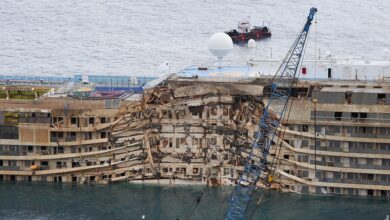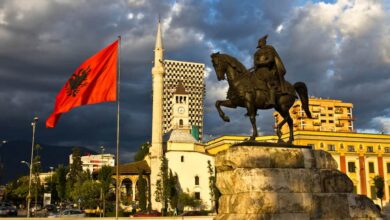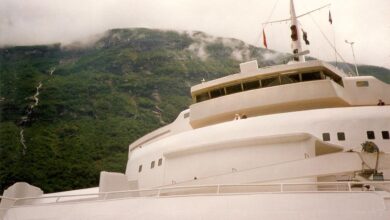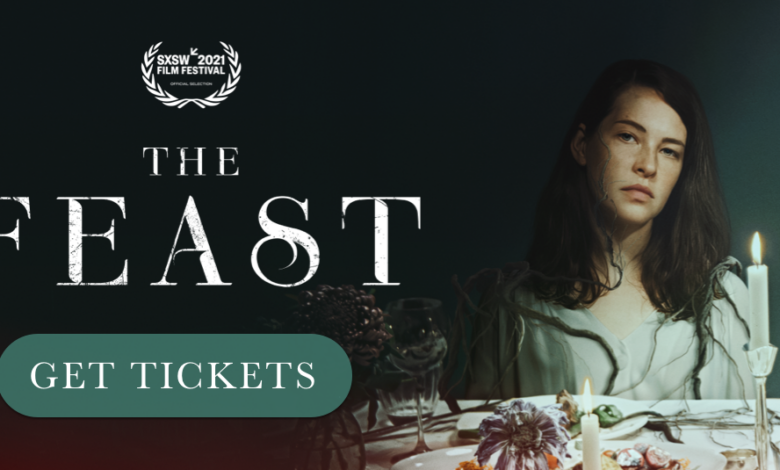
A Titanic Feast Recreated A Culinary Journey
A Titanic feast recreated: Delve into the culinary world of the ill-fated ship, exploring the lavish meals of the wealthy passengers and the simpler fare of the common folk. Imagine the grandeur, the aromas, and the social dynamics of a dinner aboard the Titanic. This journey will unravel the historical context, the culinary aspects, and the social impact of a meal aboard this iconic ship.
From the finest cuts of meat to the delicate pastries, this exploration goes beyond the surface. We’ll uncover the recipes, the ingredients, and the preparation methods used to craft these unforgettable dishes. The recreation of these feasts will offer insights into the culinary practices of the era, contrasting them with modern-day dining experiences.
Historical Context
The Titanic’s maiden voyage, a symbol of opulence and progress, offered a unique glimpse into the dining experiences of the early 20th century. From the meticulously prepared menus to the strict social etiquette, the food served aboard reflected the class divisions of the era. This journey wasn’t just about travel; it was a statement about societal expectations and the lavishness that accompanied wealth.The dining experience was carefully curated to reflect the ship’s prestigious image.
The meals, prepared using the culinary techniques of the time, were meant to impress passengers and showcase the ship’s capabilities. This was crucial, as the Titanic was marketed as the pinnacle of luxury travel.
Dining Experience on the Titanic
The Titanic’s dining rooms, especially those in first class, were designed to create an atmosphere of sophistication. Tables were meticulously set, silverware polished to a gleam, and china imported from around the world. The overall impression was one of grandeur and refined taste.
Menu and Food Preparation
Food preparation methods in the early 20th century were vastly different from modern standards. Fresh ingredients were often sourced from local markets and processed using traditional techniques. Meat, poultry, and fish were common components of the menu. Fruits and vegetables were also significant parts of the diet.
Class Differences in Dining
The Titanic’s dining experience differed dramatically based on passenger class. First-class passengers enjoyed elaborate multi-course meals with a wide variety of choices. Second-class passengers had a more modest menu, while third-class passengers had the simplest meals, reflecting the strict social hierarchy of the era.
Social Customs and Etiquette
Dining on board the Titanic was governed by strict social customs and etiquette. Passengers were expected to dress appropriately, and table manners were paramount. The dining experience was an opportunity to display social standing and refined conduct. This was especially true in the first-class dining rooms, where the emphasis on proper etiquette was highly visible.
Significance of Meals
The meals served aboard the Titanic were a crucial part of the ship’s overall reputation and status. They were meant to showcase the opulence and refinement of the era, demonstrating the ship’s capacity to provide a superior experience for its passengers.
Comparison of Food Options Across Classes
| Class | Main Dishes | Sides | Desserts |
|---|---|---|---|
| First Class | Roasted beef, prime rib, fresh seafood, poultry | Roasted vegetables, potatoes, salads, bread | Cakes, pastries, pies, fruit, ice cream |
| Second Class | Roasted meats, fish, stews | Mashed potatoes, boiled vegetables, bread | Puddings, fruit, pastries |
| Third Class | Stews, soups, bread, potatoes | Salads, vegetables, bread | Simple desserts, fruits |
Recreations and Interpretations
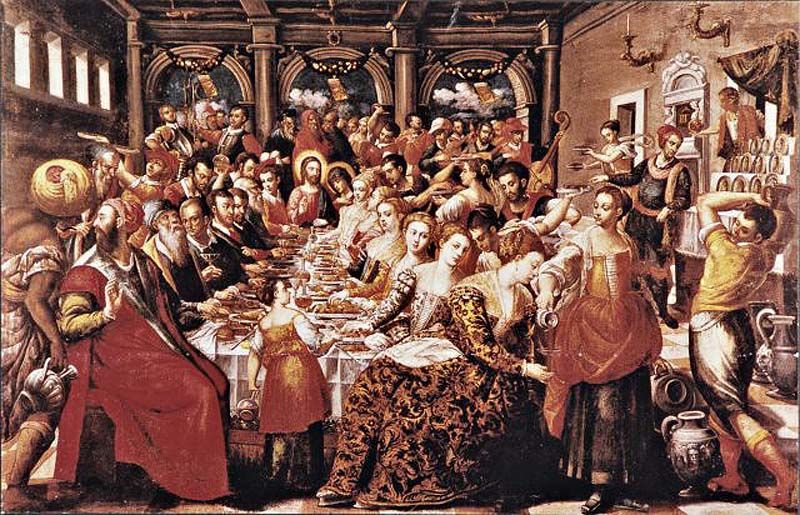
The Titanic’s culinary offerings, while not the focus of the voyage, provide a fascinating glimpse into the social hierarchy and expectations of the time. Recreating these feasts offers a unique opportunity to delve deeper into the era’s culinary traditions and the experiences of passengers, regardless of their class. The sheer variety of approaches to this task, from historical accuracy to artistic license, is compelling.Different methods for recreating a Titanic feast allow for a multitude of interpretations.
Some recreate meals with meticulous attention to the original ingredients and techniques, while others emphasize the overall atmosphere and sensory experience, focusing on the ambiance of the time rather than precise replication.
Methods of Recreation
Various methods are used to recreate Titanic feasts. A key approach is the meticulous sourcing of historical recipes and ingredients. This involves extensive research into contemporary cookbooks, passenger accounts, and archival documents. Reproducing the exact recipes, often using period-appropriate equipment, is another important method. This approach seeks to replicate the experience of eating at a Titanic table as closely as possible.
An alternative approach emphasizes the overall dining experience, focusing on the ambiance and social context of the meal. This approach might utilize recipes that approximate the flavors and types of dishes served without strict adherence to specific ingredients or methods.
Presentation Mediums
The Titanic feast can be presented in a variety of mediums. A cookbook offers a detailed and hands-on approach, allowing readers to recreate the meals themselves. A documentary or a cooking show might offer a more visual and engaging presentation, showing the process and providing insights into the history and techniques. A restaurant can provide a tangible experience, recreating the atmosphere and ambiance of the dining halls on the ship, allowing guests to partake in a more immersive experience.
Challenges in Recreation
Recreating the Titanic’s food presents significant challenges. The precise ingredients, often unavailable or with vastly different qualities compared to modern counterparts, pose a problem. Authentic techniques and equipment may be difficult to acquire, requiring significant research and adaptation. Maintaining the flavor profiles of the era, considering the differences in palate and cooking methods, also presents a challenge.
A balance between accuracy and accessibility is vital.
Interpretations of the Menu
Interpretations of the Titanic’s menu vary considerably. Some focus on replicating the exact menu items and dishes served to different classes of passengers, while others focus on the overall dining experience. This includes the range of foods, the social context, and the cultural implications of the food. A key difference lies in the emphasis on accuracy versus creating a culinary experience that captures the essence of the period.
Historical Accuracy of Recreations
The historical accuracy of recreations varies significantly. Some recreations meticulously follow known recipes and ingredients, while others take artistic liberties to achieve a more immersive experience. The accuracy depends heavily on the availability of reliable historical data and the judgment of the recreators. A comprehensive review of primary and secondary sources is essential.
Ever imagined a Titanic feast recreated? It’s fascinating to think about the culinary experiences of that era. With that in mind, it’s great to see companies like AMA Waterways, launching their 10th anniversary agent contest here , highlighting the history and elegance of river cruises. A recreated Titanic feast would surely be a magnificent experience, wouldn’t it?
Table of Recreator Approaches
| Recreator | Focus | Accuracy | Medium |
|---|---|---|---|
| “Titanic Cookbook” | Exact recipes and ingredients | High | Book |
| “Titanic Dinner Experience” | Atmosphere and ambiance | Moderate | Restaurant |
| “Titanic: A Culinary Journey” | Historical context and flavor profiles | High | Documentary |
Culinary Aspects
The Titanic’s dining experience, while a testament to the opulence of the era, was also a reflection of the limitations and possibilities of 1912 cuisine. From the grand dining halls to the more casual meals served in various areas, the food and drink available on board provided a glimpse into the culinary standards of the time, highlighting the difference between the experiences of first-class passengers and those in other classes.The culinary offerings on the Titanic were carefully curated to meet the diverse needs and expectations of its passengers.
First-class diners enjoyed elaborate meals, featuring a wide variety of dishes, while the dining experiences for other classes were less elaborate, reflecting the social hierarchy of the time. The quality and quantity of food varied across classes, with first-class passengers receiving the most extensive and diverse choices.
Food Served on the Titanic
The Titanic’s menu showcased a range of dishes common to the era. First-class passengers had access to a more extensive menu, with dishes like roast beef, poultry, seafood, and various desserts. Second-class passengers enjoyed a less extensive selection, focusing on more traditional and familiar fare. Third-class passengers had meals that were more basic, often relying on staples like bread, potatoes, and meat.
The menus also included a wide array of beverages, such as tea, coffee, and a selection of wines.
Culinary Skills and Techniques
The culinary skills and techniques used to prepare the Titanic’s meals were a blend of traditional methods and the evolving standards of the time. Professional chefs, likely with experience in high-end restaurants or steamship kitchens, were responsible for overseeing the preparation of meals. The chefs likely used techniques like roasting, baking, and stewing, with ingredients sourced from local markets and global suppliers.
Their culinary skills played a critical role in the overall dining experience for passengers.
Ingredients and Sourcing
The ingredients available for preparing meals on the Titanic were a reflection of the global trade networks and agricultural practices of the era. Fresh produce was likely sourced from local markets, while meats and some seafood were likely imported. Preservation methods like canning and salting were crucial for ensuring the longevity of ingredients during the voyage. A significant challenge was maintaining freshness and preventing spoilage, given the length of the journey.
The availability of ingredients dictated the types of dishes that could be prepared.
Comparison with Contemporary Dining Experiences
Contemporary dining experiences differ significantly from those on the Titanic. Today’s diners have access to a wider variety of ingredients and cooking methods, along with more diverse culinary traditions. The availability of refrigeration and advanced food preservation techniques allows for greater freshness and variety in modern meals. The emphasis on flavor profiles and experimentation in contemporary cuisine stands in contrast to the more traditional approaches of the early 20th century.
Wow, a recreated Titanic feast sounds amazing! Imagine the meticulous planning and preparation required. It’s fascinating to think about the sheer effort involved, which really highlights the dedication of a chef like Hal, the executive chef, in the role of recreating these historic dishes. To learn more about a day in the life of a top chef like him, check out a day in the life hal executive chef.
It’s clear that even recreating a Titanic meal demands an expert like that. So much detail must go into replicating those dishes accurately.
The Titanic’s menu reflected the culinary practices of its time, while modern dining offers a vast global palette of flavors and techniques.
Types of Dishes and Drinks
The Titanic’s menu offered a variety of dishes catering to different tastes and dietary needs. First-class passengers enjoyed a range of dishes, including roast beef, roast chicken, seafood, and various vegetables. Second-class passengers had a slightly less elaborate selection, focusing on familiar dishes. Third-class passengers likely had more basic meals, with dishes such as stew, bread, and potatoes.
Beverages included tea, coffee, and a selection of wines.
Recipes of Key Dishes
| Dish | Ingredients | Preparation |
|---|---|---|
| Roast Beef | Beef, herbs, spices, butter | Roast beef, seasoned with herbs and spices, and baked until cooked through. |
| Roast Chicken | Chicken, herbs, spices | Roast chicken, seasoned with herbs and spices, and baked until cooked through. |
| Seafood Stew | Seafood, vegetables, broth | Seafood and vegetables simmered in a flavorful broth. |
| Vegetable Casserole | Vegetables, cream, cheese | Vegetables layered with cream and cheese, baked until heated through. |
Social and Cultural Impact
A Titanic feast recreation isn’t just about recreating a meal; it’s about re-experiencing a moment in history, examining societal shifts, and understanding the enduring allure of the past. The event’s impact extends far beyond the dining hall, touching on our collective fascination with luxury, social class, and the human experience. This exploration delves into the complex interplay between the past and present, revealing how such a recreation can both illuminate and challenge our perceptions.The recreation serves as a powerful lens through which to view the stark social divisions of the era.
It allows us to understand the stark differences in the food experiences of the various classes aboard the Titanic. This is not simply about food, but about the very fabric of society, where access to luxury was deeply intertwined with social standing. The event becomes a powerful tool for education, highlighting the importance of historical context and challenging modern perspectives.
Social Implications of a Titanic Feast Recreation
The recreation can highlight the stark class disparities of the time. The contrast in the dining experiences between the first-class passengers and the third-class passengers, while vividly portrayed in the historical accounts, can be made even more palpable through a recreated feast. This allows visitors to connect with the historical realities of social stratification and its impact on daily life.
The event can also serve as a platform for reflection on contemporary social issues, such as inequality and access to resources.
Imagine a titanic feast recreated, a culinary spectacle of the past brought to life. But beyond the delectable dishes, there’s also a modern marvel happening in the world of aquatic exploration. Aqua expeditions are upgrading both Amazon vessels, which, in a way, mirrors the scale and grandeur of a titanic feast, showing us how the world continues to innovate and expand.
Aqua expeditions to upgrade both Amazon vessels demonstrate this commitment to advancement. The impressive scale of the feast recreation, like these modern improvements, is fascinating to contemplate.
Cultural Significance of the Event
The Titanic, a symbol of both opulence and tragedy, holds a unique place in global culture. The recreation of a Titanic feast offers a tangible connection to this significant historical moment. It allows individuals to experience a piece of history, to step into the past, and understand the context surrounding the fateful voyage. The cultural significance lies not just in the food, but in the atmosphere, the storytelling, and the collective experience.
Impact on Contemporary Society
A Titanic feast recreation can have a profound impact on contemporary society by fostering a sense of historical awareness and critical thinking. It can challenge preconceived notions about the past, while also prompting reflections on the present. The event can inspire discussions about social inequality, class structures, and the human desire for luxury and status. It also provides an opportunity to examine how cultural values and norms have evolved over time.
Comparison of Past and Present Social Norms Surrounding Food
The social norms surrounding food in the early 20th century were deeply influenced by social hierarchy. First-class passengers enjoyed a vast array of dishes and fine dining experiences, while third-class passengers had far more limited options. These distinctions were not merely about food but reflected the rigid social structures of the time. Today, food culture is far more diverse and accessible.
While social hierarchies still exist, the access to and consumption of food have changed significantly. The recreation offers a fascinating glimpse into this evolving relationship.
Imagine a titanic feast recreated – a feast fit for a king, or perhaps a king-sized cruise! This epic culinary experience is fantastic, but for a truly unforgettable journey, consider exploring the Mekong River aboard aqua expeditions to operate mekong cruises. The sheer beauty of the region, combined with the luxurious experiences offered, will make your recreated feast even more memorable.
After all, a truly great feast deserves a truly great journey!
Potential for Recreations to Evoke a Sense of History
Food is a powerful trigger of memories and emotions. A recreation of a Titanic feast, by employing accurate historical details, can transport participants to the past, allowing them to experience a sense of place and time. The attention to detail in the food preparation, the attire, and the ambiance can immerse guests in the period, providing a truly engaging and enriching experience.
This allows a deeper understanding and appreciation of the period.
Table: Reflecting Cultural Perspectives in Recreations
| Cultural Perspective | Reflection in the Recreation |
|---|---|
| First-Class Passenger | Sophisticated cuisine, fine china, elaborate presentation. |
| Third-Class Passenger | Simpler fare, likely focused on sustenance, potentially showcasing regional specialties. |
| Contemporary Viewer | A juxtaposition of past and present food cultures, highlighting societal shifts and evolving access to resources. |
Visual Representations
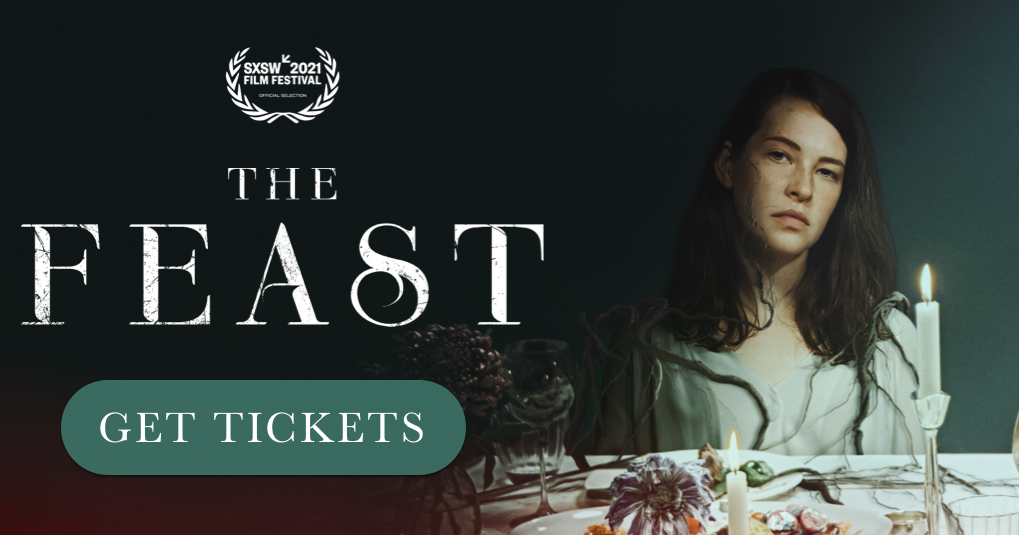
A recreated Titanic feast isn’t just about the food; it’s a complete sensory experience. The visuals must transport the viewer back to that era, capturing the opulence and social stratification of the time. This requires careful attention to every detail, from the tableware to the lighting, all working together to evoke the atmosphere of the grand liner.The visual representation of a Titanic feast needs to be meticulously crafted to capture the essence of the event.
This entails understanding the social dynamics of the period, the materials available, and the artistic sensibilities of the time. Accuracy and authenticity are paramount in recreating the experience, ensuring the viewer feels immersed in the atmosphere of the 1910s.
Dining Room Atmosphere
The dining room’s atmosphere must be meticulously replicated. Imagine the vast, ornate space, likely featuring rich wood paneling, crystal chandeliers, and intricate wall decorations. The soft glow of the numerous gaslights or electric lamps would cast a warm, inviting light. The subdued lighting, coupled with the sounds of polite conversation and the clinking of silverware, would create an ambiance of refined elegance.
The subtle scent of the food, carried on the air, would further enhance the sensory experience.
Passenger Attire
The clothing of the passengers is crucial to establishing the era. First-class passengers would be dressed in elegant evening gowns, formal suits, and top hats. The attire would reflect the social hierarchy, with those in lower classes dressed in more modest, yet still respectable, attire. Women in the first-class would wear elaborate hats, gloves, and jewelry, while men would sport formal attire, highlighting the distinctions between classes.
Tableware and Decorations
The tableware and decorations should reflect the opulence of the time. Imagine delicate china, gleaming silverware, and possibly crystal glasses. The decorations would likely feature floral arrangements, perhaps in delicate vases, and tablecloths in rich fabrics like linen. The use of silverware and glassware would vary according to the class of the passenger.
Visual Representation Table
| Aspect | Description |
|---|---|
| Dining Room | Large, ornate space with rich wood paneling, crystal chandeliers, and wall decorations. Soft, warm lighting from gaslights or electric lamps. |
| Passenger Attire | First-class: elegant evening gowns, formal suits, top hats. Second-class: respectable, but less elaborate clothing. Third-class: modest, yet presentable attire. |
| Tableware | Delicate china, gleaming silverware, crystal glasses. |
| Decorations | Floral arrangements, tablecloths in rich fabrics like linen. |
| Color Palette | Rich browns, golds, and deep reds for the décor, complemented by soft, warm lighting. |
| Lighting | Subdued, warm lighting from gaslights or electric lamps to evoke the ambiance of the time. |
Color Palette and Lighting
The color palette should be rich and warm, reflecting the era’s aesthetic sensibilities. Deep reds, rich browns, and golds would dominate the décor. The lighting should be subdued and warm, mimicking the gaslight or electric lamps of the period. This combination of colors and lighting would create an immersive and authentic atmosphere, drawing viewers into the heart of the Titanic’s grandeur.
Ever imagined a titanic feast recreated? It’s fascinating to think about the meticulous details involved, but what about the politics of travel? Think about how Amtrak, a vital part of our nation’s transportation system, is deeply entwined with political considerations. amtrak at junction of travel and politics explores this fascinating intersection. Ultimately, recreating such a feast highlights the human desire to gather and celebrate, just like the original event, but on a smaller scale.
Practical Considerations
Hosting a Titanic-era feast presents a unique set of logistical challenges. Replicating the opulence and grandeur of the ship’s dining experiences requires careful planning and execution, from procuring authentic ingredients to ensuring a seamless service experience. This section delves into the practicalities of such a recreation, considering the resources, costs, and meticulous preparation needed to bring this historical experience to life.The recreation of a Titanic feast necessitates a comprehensive understanding of the era’s culinary practices and social norms.
The sheer scale of the event, from the menu selection to the serving protocols, demands meticulous attention to detail. This section explores the necessary resources, materials, and logistical aspects to ensure a successful and historically accurate portrayal.
Logistical Aspects of Hosting
The logistical planning for a Titanic feast involves coordinating various elements, including guest management, venue selection, staffing, and catering. A crucial aspect is determining the appropriate venue to recreate the ambiance of the grand dining halls. A large space, ideally with high ceilings and ornate decorations, is necessary to emulate the grandeur of the ship’s dining rooms. This will be essential for accurately recreating the atmosphere of the era.
Necessary Resources and Materials, A titanic feast recreated
Replicating the Titanic’s feast requires significant resources, ranging from authentic tableware to specialized cooking equipment. This includes recreating the dining hall’s aesthetic, using period-appropriate tableware, cutlery, and glassware. The procurement of vintage-style linens and tablecloths, along with other decorative elements, is vital for maintaining the era’s ambiance. The availability and cost of these items need careful consideration.
Ingredients and Sourcing
The menu selection will heavily influence the sourcing process. Authentic recipes and historical records are essential to determine the exact ingredients and their proportions. The availability of some ingredients might be challenging, requiring extensive research to locate accurate substitutes or sources for rare items. Consideration must be given to sourcing these ingredients from the same regions that were common in the era of the Titanic.
Preparation and Serving Methods
Accurately recreating the preparation methods is crucial. This includes sourcing recipes from period cookbooks, historical documents, and potentially contacting culinary historians. Accurate preparation and serving techniques, along with detailed documentation of the recipes, are essential to ensure authenticity. Specific methods for preserving and preparing ingredients must be considered, including cold storage techniques for perishable items. This will allow for a safe and effective process for food preparation and presentation.
Cost and Feasibility
The cost of recreating a Titanic feast will be significant. Factors like ingredient sourcing, venue rental, staffing, and decorations will all contribute to the overall expense. The feasibility will depend on the scale of the event, the level of authenticity desired, and the available budget. To achieve a cost-effective approach, consider using substitutes for some ingredients while maintaining the general flavor profiles and historical accuracy.
Required Ingredients and Quantities
| Ingredient | Quantity |
|---|---|
| Prime Beef Roast | 10 kg |
| Roasted Potatoes | 15 kg |
| Yorkshire Puddings | 20 |
| Fresh Asparagus | 5 kg |
| Steamed Vegetables | 5 kg |
| Lemon Tart | 20 |
| Fruit Platter | (Assorted fruits) |
| Wine (Red and White) | 10 bottles each |
This table provides a basic framework for the ingredients and their estimated quantities. The exact quantities will depend on the number of guests and the specific menu choices. Careful consideration should be given to the portions and quantities to ensure an accurate representation of the Titanic’s dining experience.
End of Discussion: A Titanic Feast Recreated
In conclusion, recreating a Titanic feast offers a unique opportunity to delve into the past, bringing the culinary and social customs of the era vividly to life. Whether through books, documentaries, or even a meticulously recreated dinner, the legacy of the Titanic’s dining experience lives on, allowing us to appreciate the history and significance of this remarkable event.
Top FAQs
What were the typical drinks served on the Titanic?
Titanic passengers enjoyed a variety of beverages, including wines, spirits, and non-alcoholic options like fruit juices and sodas. First-class passengers likely had a wider selection of imported wines and liquors, while others enjoyed more basic drinks.
How did the quality of food vary between passenger classes?
Food quality significantly differed based on passenger class. First-class passengers enjoyed a wider selection of high-quality, meticulously prepared dishes, while those in the lower classes received more basic meals. This disparity reflected the social stratification of the time.
Were there any specific dietary restrictions considered?
While precise details are hard to find, it’s likely that some dietary restrictions, such as vegetarian or religious needs, were accommodated to a degree, though likely less so for the lower classes.
What were the challenges in accurately recreating the Titanic’s menu today?
Recreating the Titanic menu accurately presents challenges related to ingredient sourcing, preparation techniques, and obtaining precise historical recipes. Certain ingredients may be harder to find or have changed significantly over time, requiring careful research and interpretation.

